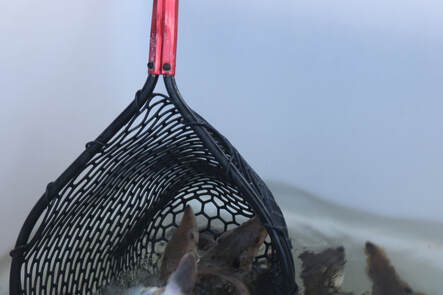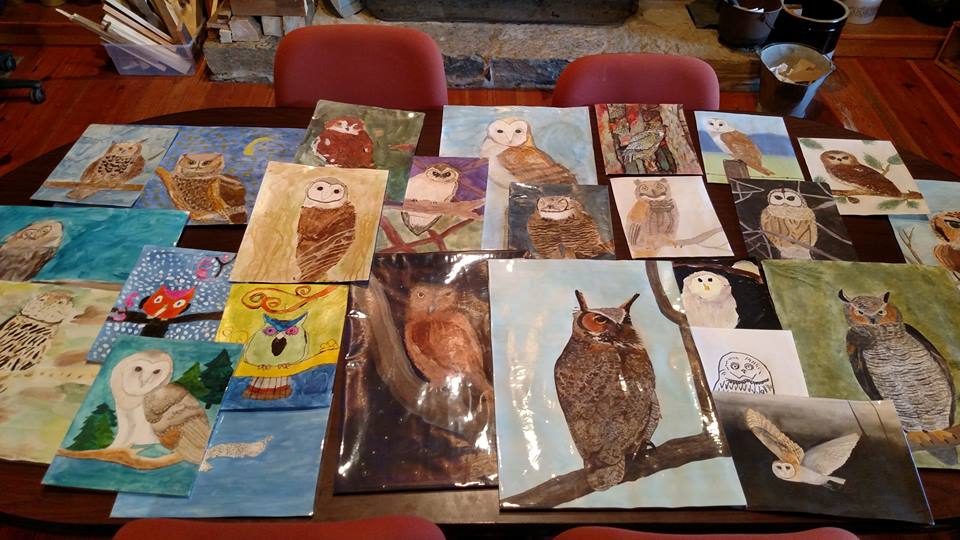Nature’s Bookshelf by Ray Zimmerman
Before popular films portrayed Indiana Jones, The Mummy, and The Scorpion King, a real life archaeologist took up his pen and popularized the search for meaning in the past. Loren Eiseley, archaeologist, anthropologist, and paleontologist, authored numerous popular books which traced the story of our past and showed us the potential for an even greater future. A review of his book The Star Thrower appeared in the Chicago Tribune and stated that he “captured the joy of human experience, observing with a gifted, perceptive eye those intimations not visible to others.” He was born to an impoverished family; by today’s standards almost certainly dysfunctional. From these humble beginnings he rose to become a celebrated scholar and popular author.
Eiseley could read and write before he entered school. The summer before he entered first grade, he wrote a booklet with the misspelled title “Animal Aventures,” written on stapled notebook paper. During his childhood he obtained a book about aquariums and built homemade aquariums in which creatures thrived.
At the University of Nebraska, Eiseley struggled with night work at a hatchery where he awakened hourly to turn the eggs. He checked the supply of kerosene in the heaters and made certain no fires were about to blaze. At that time he contracted tuberculosis and went to live in a cabin near Death Valley while he recovered. He rode the rails as a depression era hobo before he returned to school.
Eiseley continued to write after he dropped studies in English to focus on anthropology and archaeology. Some his poems and essays appeared in Prairie Schooner, a reputable literary journal. He became a dig supervisor in the archaeology field classes. He also got summer work as a bone hunter for the Morill Museum, which gave him extensive field experience in paleontology.
After completion of his doctorate at the University of Pennsylvania, Eiseley taught at the University of Kansas and at Oberlin College in Ohio. He returned to the University of Pennsylvania to chair the department of Anthropology, the very position formerly held by his mentor, Frank Speck. He was eventually promoted to Provost.
Eiseley’s memories of Speck prompted him to leave the position of Provost and apply for teaching and field work positions. When officials at the University of Pennsylvania learned of his plans, they created the Benjamin Franklin Professorship and offered him the first appointment. He remained at the University of Pennsylvania for the rest of his career, enjoying the freedom to conduct research and write.
Eiseley was already 50 years old when he published his first book, The Immense Journey. This single work firmly established him as a literary naturalist. It tells the story of human history, from the beginning of time until the present.
His second book, Darwin’s Century, received the national Phi Beta Kappa science award. In this book, he demonstrated that Darwin drew on other thinkers when he developed the theory of evolution. The Firmament of Time, his third book, was based on his lectures on the history of science, delivered as a guest lecturer at the University of Cincinnati.
In his later years, Eiseley resumed publishing his poetry. In “The Face of the Lion,” an autobiographical poem, he confronts both painful memories of his childhood and the issues of aging. It is perhaps the most powerful poem in his first volume, Notes of an Alchemist. He also speaks of endangered species and the loss of diversity of life in his second volume of poems, The Innocent Assassins.
Eiseley continued to write until his death of pancreatic cancer at age seventy. He published three books of poetry and at least eight nonfiction books during his lifetime. He selected essays, poems, and segments of his books to appear in an anthology, The Star Thrower. Published posthumously, it is an excellent introduction to Eiseley’s work.
A final work, The Lost Notebooks of Loren Eiseley, contains poems, notes, and fragments of stories. Kenneth Heuer, Eiseley’s editor, prepared the manuscript.
Eiseley’s writing style and his attitude toward life is perhaps best illustrated by a passage from his autobiography, All the Strange Hours. In the passage, he recalls his days of teaching anatomy at the University of Kansas Medical School. He assisted a lecturer who performed a laboratory demonstration with a living dog. The emotions of the passage speak for themselves:
“I shook my head wearily. There is a man, a very great experimentalist, who has said that to extend ethics to animals is unutterable folly. Man cannot do this and learn, learn even to save himself. Each one of us alive has inevitably, unknowingly taken something from other lives. I thought of my steeled professional friend. I thought, though I did not say it to my concerned acquaintance, that the experiment that I had witnessed, in my judgment, was needless.
‘Just one more day,’ those beseeching eyes seemed to haunt me. They do still. I have stood since in some of the cleanest, most hygienic laboratories in the world. I have also watched dirty, homeless dogs and cats trot on to what must have been for most of them starvation, disease, or death by accident. I have never called a humane society because I, too, am an ex-wanderer who would have begged for one more hour of light, no matter how dismal. Rarely among those many thousands have I been able to protect, save, or help. This day I have recounted is gone from the minds of everyone. As for me, I have sought refuge in the depersonalized bones of past eras on the watersheds of the world.”
Sidebar: Works by and about Loren Eiseley
The Immense Journey 1957
As Eiseley’s first book length work, The Immense Journey established his literary career. It is an evolutionist view of the history of humanity and the earth. The narrative begins with the first plants and animals to emerge onto dry land, and the changes that they wrought on their world.
Darwin’s Century 1958
This book won the National Phi Beta Kappa science prize. In this book Eiseley demonstrates that the Darwin’s work drew from various thinkers of his time, including Malthus, Hutton, Cuvier, Lamark, and Wallace.
The Firmament of Time 1960
This book won the John Burroughs medal for nature writing and the Lecomte du Nouy foundation award. The chapters are drawn from lectures on the history of science delivered at the University of Cincinnati where Eiseley served as a visiting lecturer one summer.
The Mind as Nature 1962
This work was a lecture given to the John Dewey Society and published as a monograph. He analyzed the teacher’s role, particularly as applied to his own deprived background. The work was later incorporated as a chapter in his book, The Night Country.
Francis Bacon and the Modern Dilemma 1962
This was later reissued as The Man who Saw through Time.
The Invisible Pyramid 1970
As the pharos of ancient Egypt constructed pyramids and acquired artifacts to help them journey to the heavens, so modern man journeys to the stars. Eiseley also compares space flight to the dispersal phase of other living things.
The Night Country 1971
Autobiographical essays on human development, the scientific process, and the quest for meaning in the universe.
Notes of an Alchemist 1972 - Poetry
This was his first book of poetry. “The Face of the Lion” is a seminal work which reveals the author’s history and personality. Other poems speak of vanished animals and cultures.
The Innocent Assassins – Poetry 1973
Eiseley addresses vanished prehistoric animals in the poem, “Why did they Go.” Other poems celebrate vanished cultures and species becoming extinct in our own time.
The Man who Saw through Time 1973
Revised and expanded version of Francis Bacon and the Modern Dilemma
All the Strange Hours – The Excavation of a Life – Autobiography 1975
This book includes very little information about Mabel, his wife. He wanted to respect her private nature. Most of the stories are drawn from his early days in Nebraska. Others take place on the rails. Later chapters are devoted to observations of the world at large.
Another Kind of Autumn – Poetry 1977
The author tells more stories of vanishing species. This is also a work in which he confronts his own mortality. It was published immediately before his death.
The Star Thrower (Posthumous) 1978
Eiseley selected the essays and poems to appear in this anthology just before his death. It encompasses most of his career and is an excellent introduction to his work.
Darwin and the Mysterious Mr. X (Posthumous) 1979
This volume is comprised of several previously published articles examining the possible influence of Edward Blyth on Darwin’s thinking.
All the Night Wings – Poetry (Posthumous) 1979
Many poems in this volume were previously published, though not in book form. Others were drawn from his notebooks.
The Lost Notebooks of Loren Eiseley 1987
Edited and with a remembrance by Kenneth Heuer
This book includes poems, essays and fragments from his notebooks. It also includes a lengthy portion of a novel in progress.
Loren Eiseley 1983 by Andrew J. Angyal
From Twayne’s United States Authors Series, Warren French, Editor
Fox at the Wood’s Edge: A Biography of Loren Eiseley 1990 by Gale E. Christianson








 RSS Feed
RSS Feed